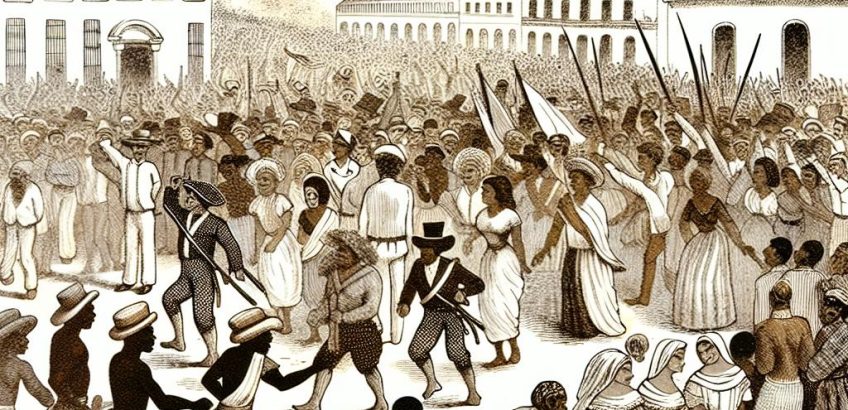
Independence movements in Central America
Independence Movements in Central America
Central America, a region with a rich cultural heritage and significant historical background, was the site of numerous independence movements in the early 19th century. The quest for independence from Spanish colonial rule played a crucial role in shaping the future of this region. These movements were instrumental in the formation of the modern nation-states that we recognize today in Central America.
Historical Context
The early 1800s in Central America were characterized by a complex political climate that stemmed from various economic and social factors. Global events of that era, such as the Napoleonic Wars, had far-reaching impacts, contributing to the weakening of the Spanish Empire. This weakening offered an opportunity for the Central American territories to pursue their aspirations for self-governance, setting the stage for the independence movements that followed.
The Role of the Spanish Empire
During this period, Central America was under the colonial regime of the Spanish Empire, initially as part of the Viceroyalty of New Spain and later under the Captaincy General of Guatemala. The colonial administration was structured in a way that favored those born in Spain, a system that bred resentment among both the native populations and the Creole elite within the region. This discontent became a driving force behind the growing desire for independence.
The Path to Independence
The independence movements in Central America didn’t occur in isolation; rather, they were part of a broader continental wave of change. Leaders in Central America took inspiration from the successful independence campaigns already unfolding in Mexico and various regions in South America. These movements offered blueprints for actions taken within Central America itself.
Key Events
The path to independence was marked by several key events that played pivotal roles in altering the course of history in Central America.
Declaration of Independence: On September 15, 1821, the provinces making up the Captaincy General of Guatemala, including present-day Guatemala, El Salvador, Honduras, Nicaragua, and Costa Rica, collectively declared their independence from Spanish rule. This declaration was a watershed moment, symbolizing a new era for the region.
Annexation to Mexico: Following their declaration of independence, these provinces joined the Mexican Empire, led by Agustín de Iturbide. However, this union was short-lived due to dissatisfaction with Mexican governance, prompting the provinces to pursue a distinct path.
Formation of the Federal Republic of Central America
In 1823, after separating from Mexico, the Central American provinces sought to unite again, forming the Federal Republic of Central America. This political entity aimed to enhance regional solidarity and create a unified front in the face of internal and external challenges. Nevertheless, internal conflicts and regional disparities soon plagued this republic, leading to its dissolution by 1838.
Legacy of Independence
The triumph of the independence movements in Central America had profound and lasting implications for the region. The collapse of the Federal Republic gave rise to the establishment of separate sovereign states: Guatemala, El Salvador, Honduras, Nicaragua, and Costa Rica. Each of these countries embarked on the journey of forging their own national identities, with unique sociopolitical dynamics unfolding in the post-independence period.
Continuing Struggles
Despite achieving independence, the road to lasting political stability in Central America was fraught with persistent challenges. The newly established states grappled with political volatility and frequent power struggles well into the 19th and 20th centuries. Each state faced the daunting task of nurturing a stable government while addressing the needs of diverse populations. Even in the face of ongoing challenges, the steadfast spirit of independence has remained a potent source of national pride throughout the region.
For those who seek to delve deeper into the complex history and present-day dynamics of Central America, one can refer to a wealth of resources available online. Notable among these is the University of Texas’s Latin American Network Information Center, which provides comprehensive insights into the region’s past and current affairs.
Reflecting on the independence movements in Central America offers valuable lessons about the power of unity and determination in overcoming colonial rule. These movements laid the groundwork for the development of Central American nations, each now boasting its unique cultural identity while contributing to the rich tapestry of the Latin American experience. The historical journey from colonial subjugation to independent sovereignty continues to inform both the challenges and the resilience encountered by these nations today. Embracing that legacy is crucial to understanding the ongoing narratives that shape the region.
In summary, the struggle for sovereignty in Central America was a vital chapter in the larger history of the Americas. It highlights the entwined nature of national aspirations and regional dynamics and underscores the enduring quest for self-determination. The movements that emerged in the early 19th century not only altered the geopolitical landscape but also charted a course for the nations that today proudly assert their sovereignty on the world stage. Through a blend of shared history and individual triumphs, Central America’s journey remains a testament to the enduring human spirit in pursuit of freedom and identity.
